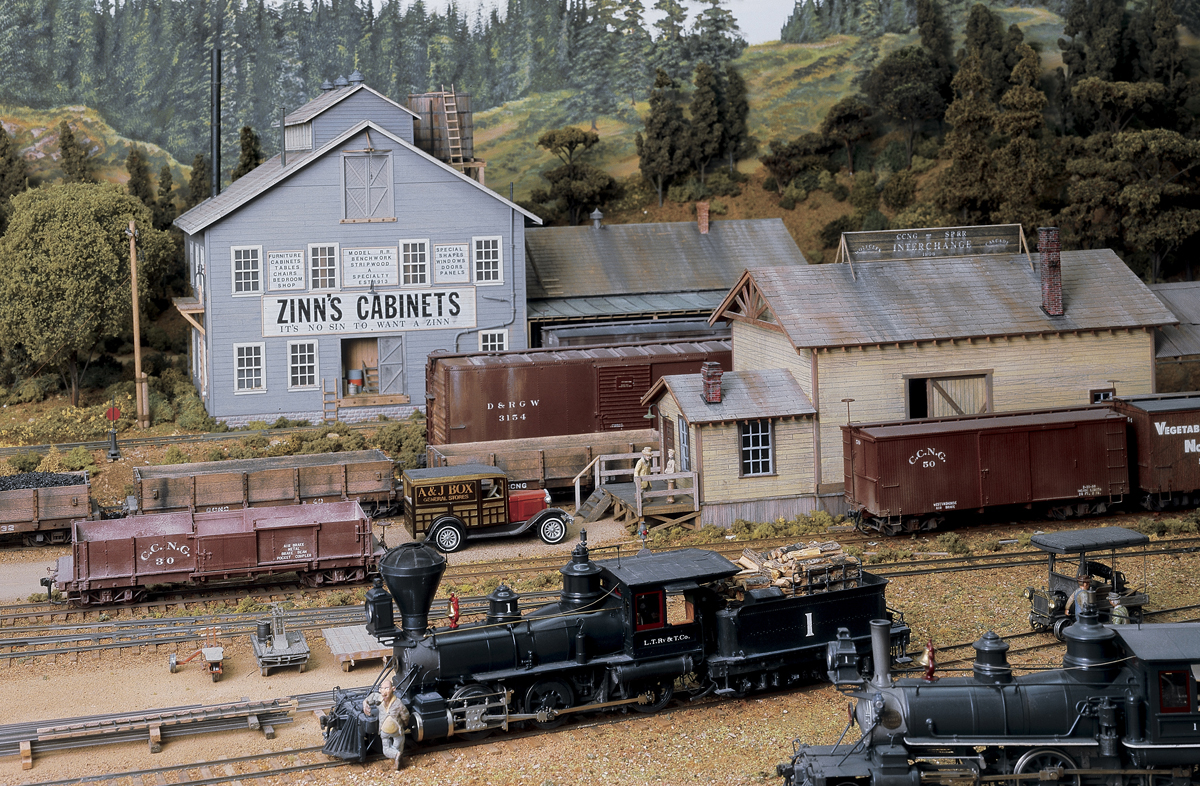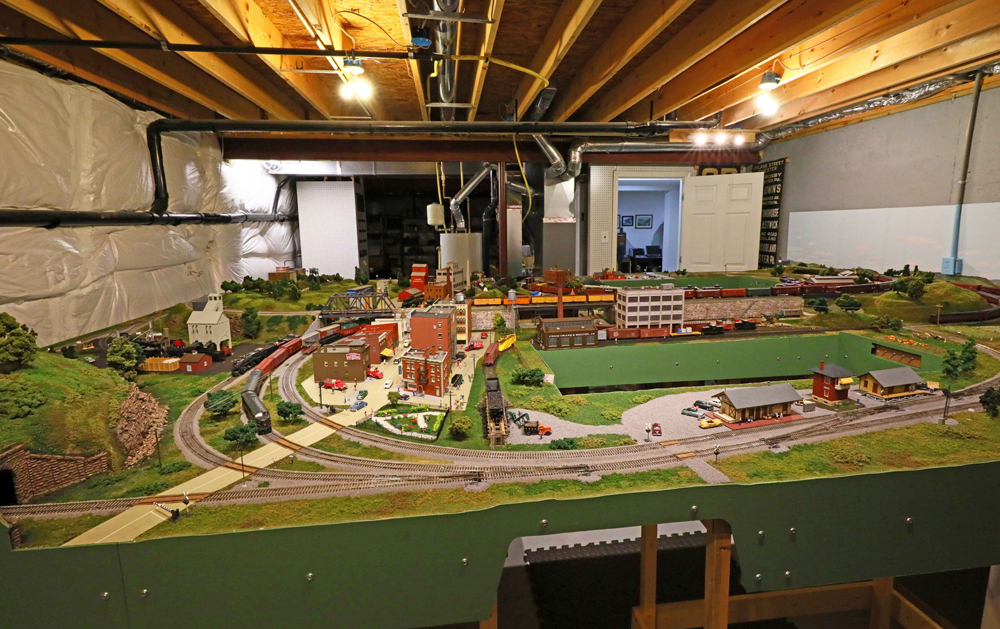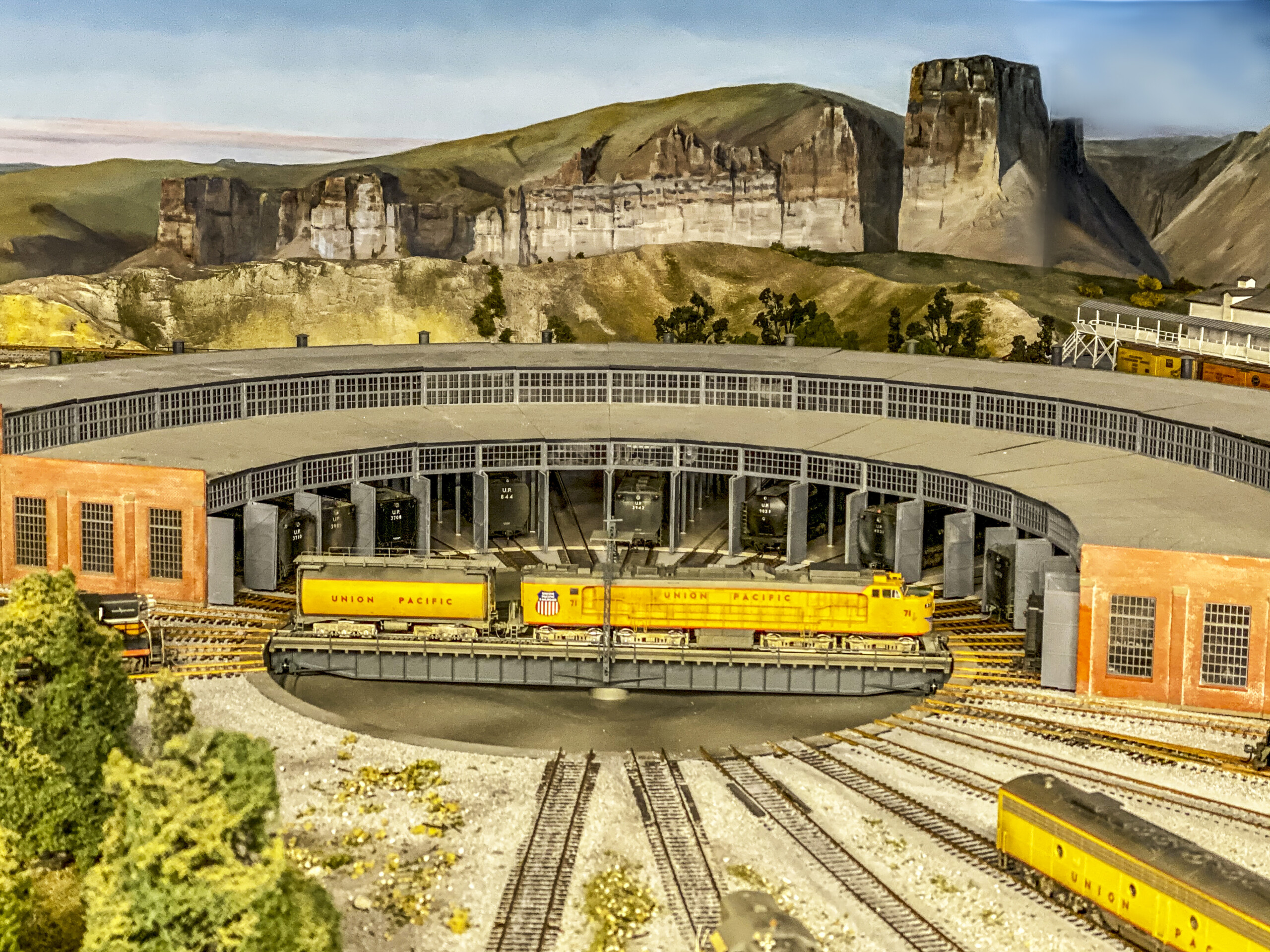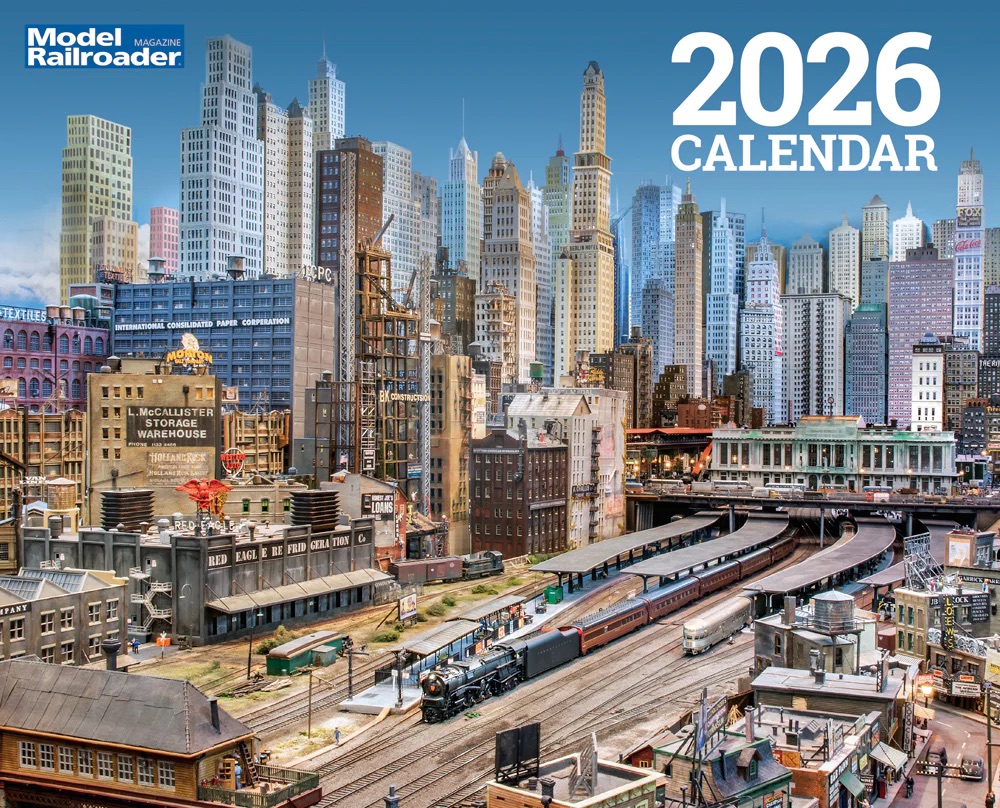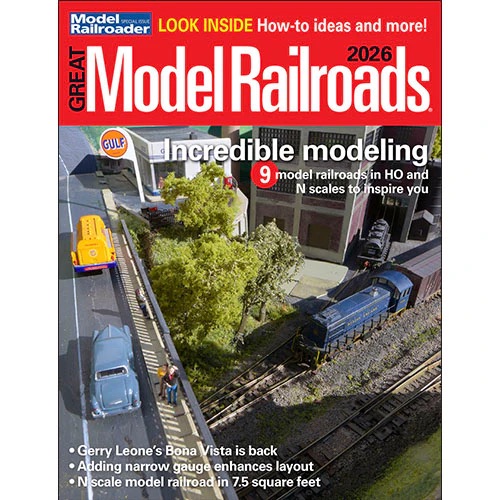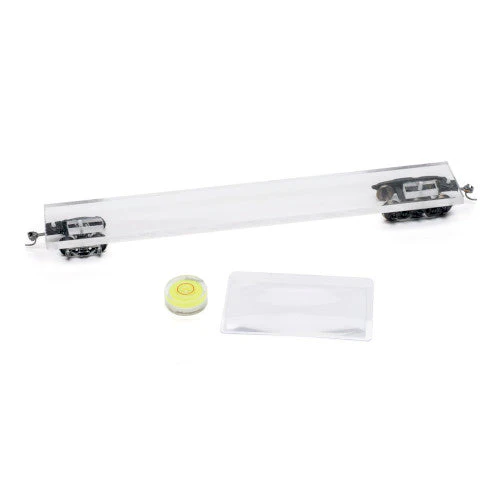The thunder of modern motive power and the rumble of long trains rolling through Colorado’s Rocky Mountain passes caught Bill Becker’s imagination years ago, and it remains the theme of his fictional N scale Colorado & Eastern RR. Working in this small scale makes it possible to capture the majesty of the Rocky Mountains with scenery towering high above the trains – sending a chill of exhilaration through anyone with even a passive interest in Colorado railroading.
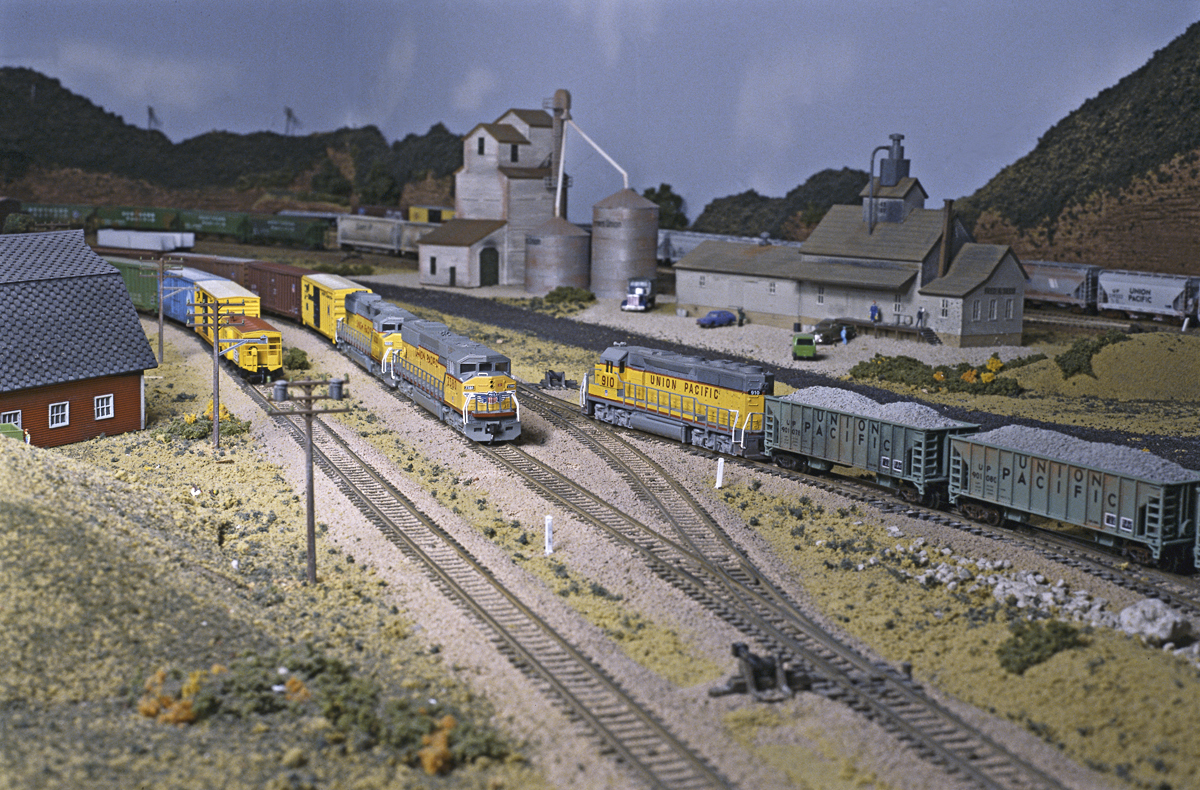
Prototype railroading in the high plains and mountains is now the realm of two super railroads, today’s Union Pacific (UP) and the Burlington Northern Santa Fe (BNSF). Both railroads pour on the horsepower to move everything from heavy unit coal trains to fast-moving manifests.
An inspection trip
A trip over the main line is probably the best way to see the railroad, so let’s climb aboard a westbound unit grain train that’s ready to depart from Westlake Yard. Two of UP’s General Electric C44-9Ws are assigned to our 40-car train of 100-ton covered hoppers.
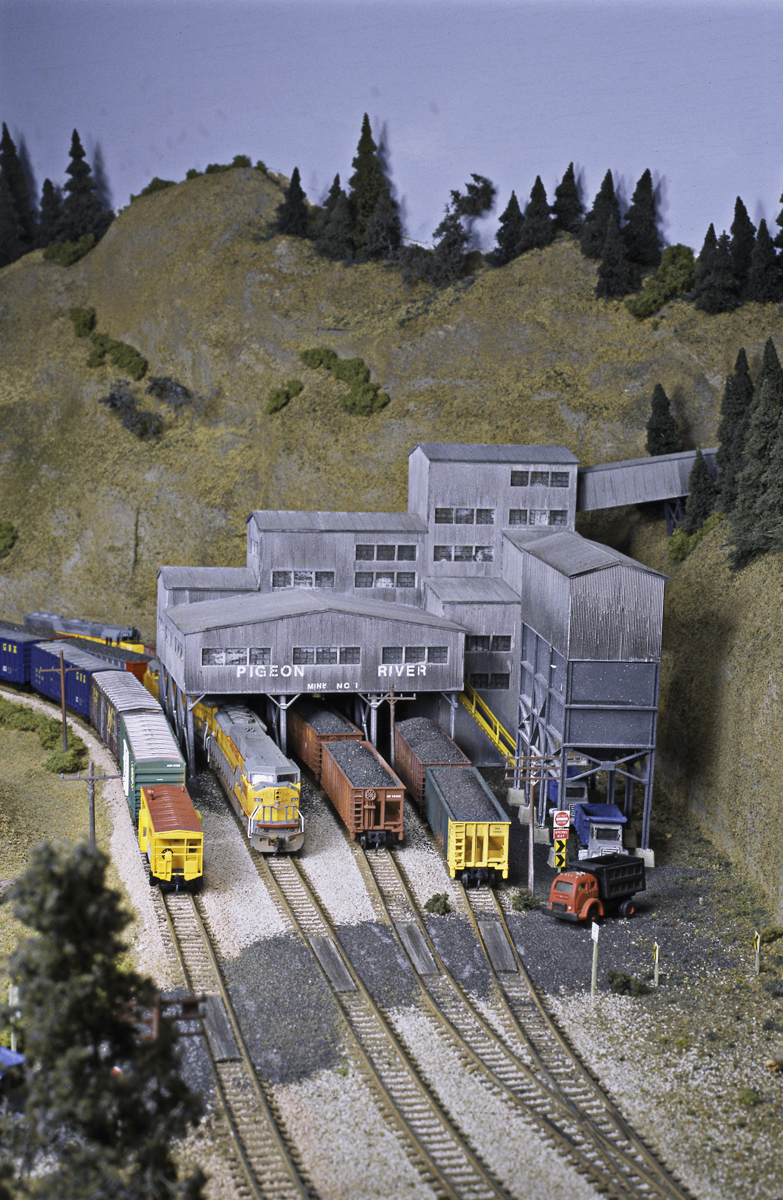
With a clearance from the dispatcher and a “high ball” from the yardmaster, engineer Jordan Forslund releases the brakes, begins to stretch the train, and gently eases it into motion. As the train begins to roll, Jordan comments “It takes a careful hand on the throttle to keep from breaking a long train in two with these high-adhesion units.”
We’re steadily picking up speed now as the train rolls past Moston Grain and heads west out of the yard. At the outskirts of town, we glide past the large Westlake Transfer Co. warehouse and the C&E’s intermodal terminal. Up ahead sits the old, dilapidated Westlake depot. It’s been closed since the early 1970s, but a variety of pigeons, little furry critters, and an occasional hobo or two still reside there. Traces of an abandoned former branch line are in the weeds nearby.
A plume of fire burns off the waste gases at the Westlake Refinery as we lean into the curve leading to the lower Pigeon River Bridge. A coal train passes overhead on the upper Pigeon River Bridge as sudden darkness and a rush of cool air mark our entry into Tunnel No. 1.
Exiting the tunnel, we can’t help squinting in the bright daylight as we pass through the town of Lyttleton. This is a very small town with only one grain elevator nestled between Tunnels Nos. 1 and 2. Inside the next portal, we begin the uphill climb through a spiral tunnel (a one-turn helix), gaining several hundred feet in altitude before reappearing at Andrea.
The Northeast Timber & Pulpwood Mill, located in Andrea, ships out numerous loads of plywood and packaged building materials on centerbeam flatcars. The scenery becomes more spectacular, towering high above the Sandy River as we roll across Hangman’s Trestle and enter Dead Horse Pass.
Pigeon River Mine No. 1 comes into view as we round the curve into this busy coal mining area. This mine originates loaded unit coal trains that operate to several utilities in the Midwest. In fact, there’s an empty coal train waiting for us in the siding at Cassandra Pass. As we cross the curved high bridge we can see the coal train’s conductor on the ground giving our train a visual inspection as we pass. A call on the radio indicates that all’s well.
Leaving Cassandra, Jordan shifts the big GEs into dynamic braking to control our speed on the long downgrade leading to the yard at Salt Lake City, Utah, where our trip ends.
Changing roles
The Salt Lake City Yard is part of an extension that’s under construction in the next room. This terminal includes a large yard, an engine servicing area, and a reverse loop so it can serve as both ends of the railroad (Salt Lake City, or North Platte, Neb.). Arriving trains can easily be rearranged, have loaded cars exchanged for empties, or have the whole consist changed as desired. Departing trains can either retrace our trip over the Rocky Mountains (eastbound), or they can head out into the Nebraska plains (westbound).
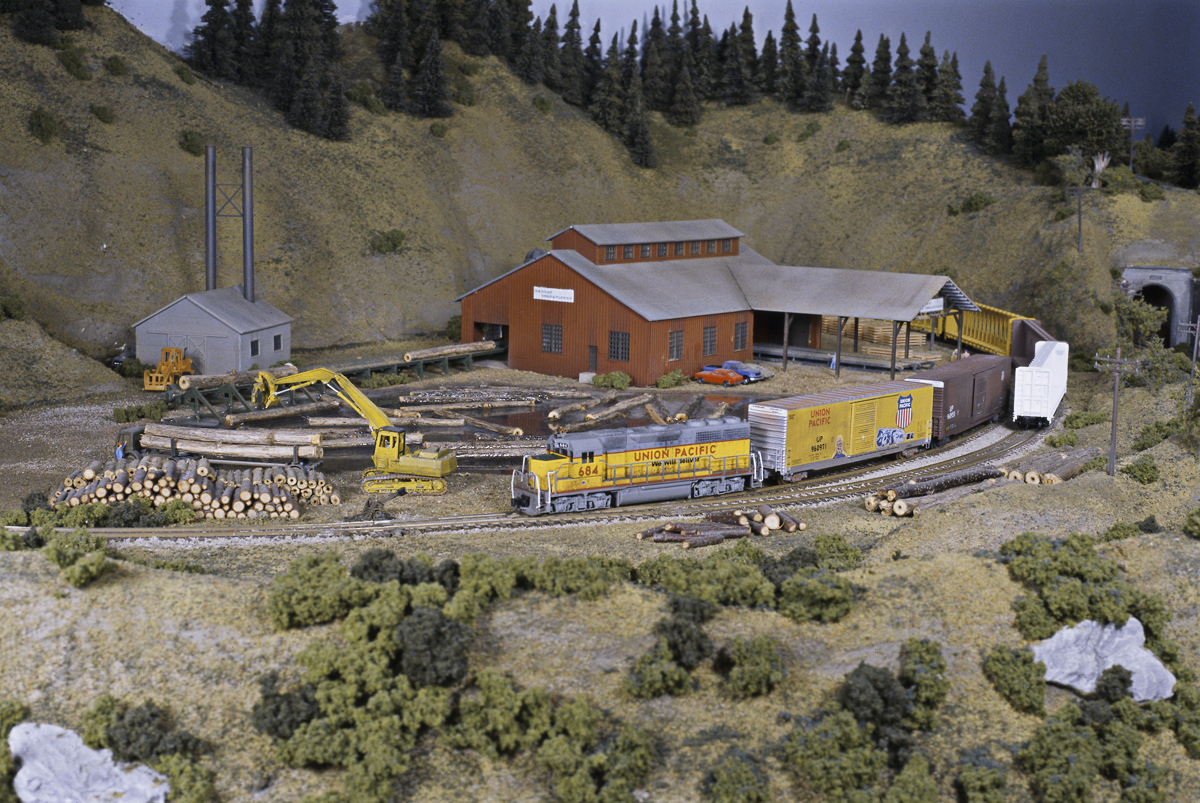
Thus, a train entering the prairie portion of the main layout represents a westbound road freight coming from the North Platte, Neb., yard. The mountains are many miles ahead, and grassy flatlands are all around. This is easily recognizable as farm and ranch country where grain elevators and feed mills are the primary industries. The busy gravel crusher at Farmers Curve is a rare non-agricultural business.
There’s a coal-fired Colorado Light & Power Co. generating plant on the out-skirts of the division point at Westlake.
Flexible operating pattern
Bill’s layout can operate point-to-point or as a continuous run. Typical operation has most trains originating from the 2 x 18-foot combined yard. A 6 x 12-foot peninsula next to the yard has a large paper mill and a dam across the South Platte River. A loop of the main line runs around the peninsula and returns to the yard so that complete trains can be easily turned for a return trip over the line. As this article was being written, most of the track-laying was done, with ballast and scenery to follow.
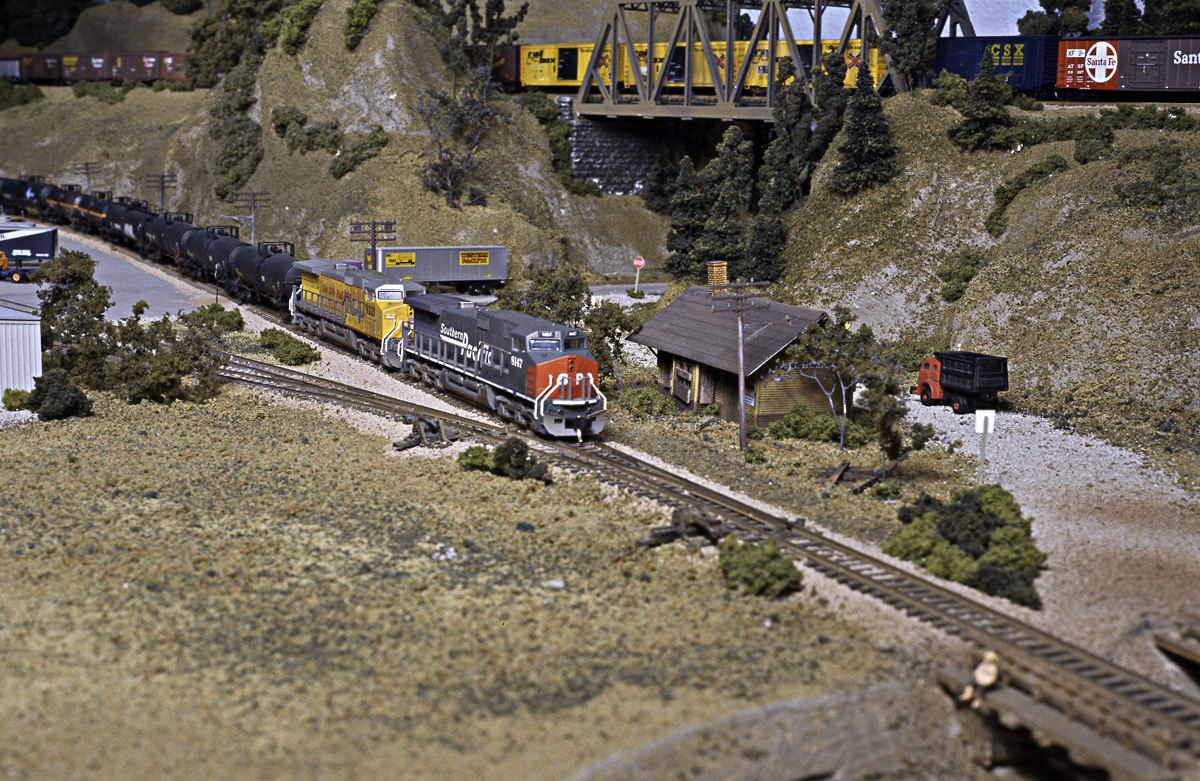
Once it’s complete, the yard will dispatch as many as six daily local freights and a host of intermodal hotshots, unit trains (coal and grain), and petrochemical tank car trains. The standard train size is 30 cars.
A car routing scheme is in the experimental stage. The system allows Bill to restage the layout for the next operating session, while his crew of seven is busy with the present session. Most of the paperwork is still in the planning stages, but when Bill gets the bugs worked out, it’ll take several hours to complete all of the switching.
A DC block control system, using six-position rotary selectors mounted on the fascia, allows the operators to walk with their trains to select the power blocks ahead of them. Six memory walk- around throttles run the trains.
Motive power and rolling stock
Big, modern road diesel locomotives dominate the C&E’s roster. The majority are recent Electro-Motive Division and General Electric locomotives in UP colors, but units from merger partners Chicago & North Western, Denver & Rio Grande Western, and Southern Pacific travel the route as well. There’s no shortage of foreign power either with engines from the Burlington Northern, CSX, and Norfolk Southern showing up in some C&E consists. Bill prefers Kato and Atlas locomotives, but he’s added some Proto 2000 and Bachmann Spectrum models, too.
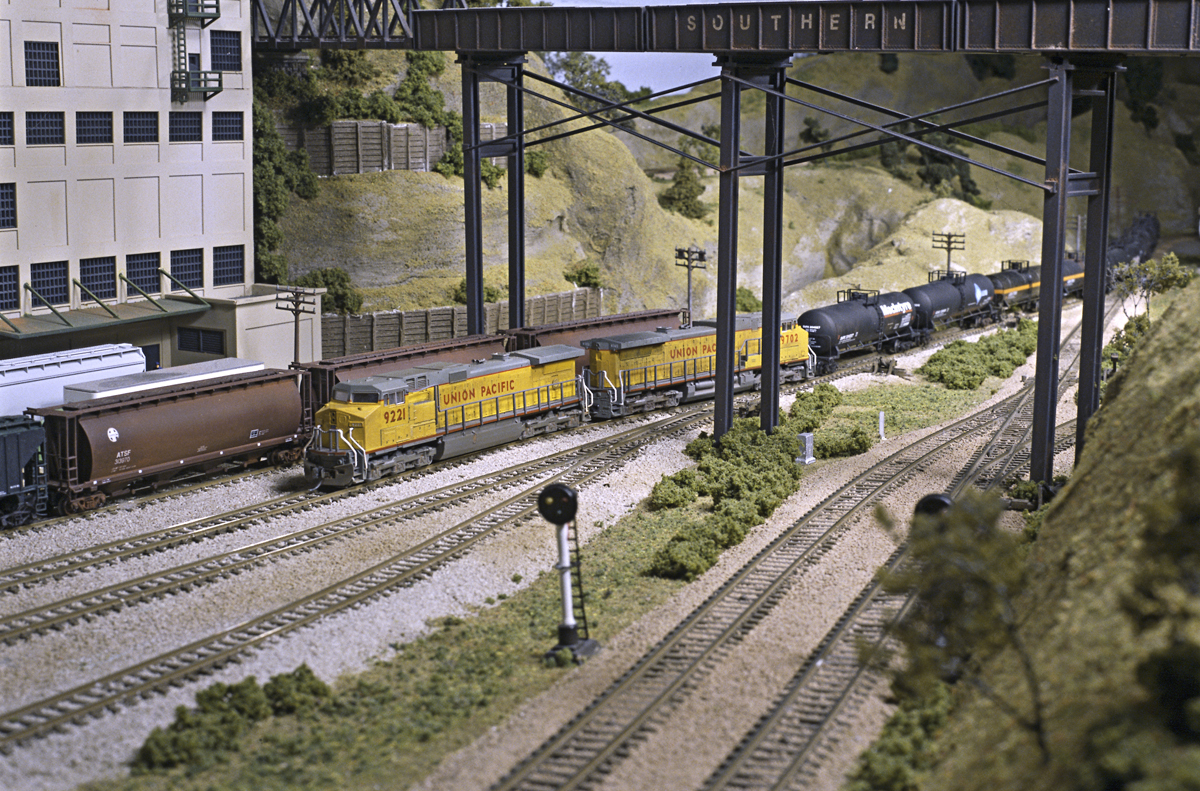
Nearly 400 cars are in service. They include Atlas, InterMountain, Micro-Trains, and Model Die Casting cars Bill has converted to his standard Micro-Trains trucks and couplers.
Bill prefers to use chalk, fixed with a light spray of Dullcote, to weather most of his motive power and rolling stock. He likes the way chalk can be controlled as it’s applied in stages to simulate the prototype’s layers of dirt. But he’s also tried airbrush weathering.
The railroad setting
Bill used extruded Styrofoam covered with layers of ground foam to create his scenic landforms. The numerous trees were homemade from locally harvested goldenrod and commercial pine trees, enhanced with an additional coating of ground foam. To create the distant hills and mountains, he carved and painted Styrofoam and then mounted it along the back edges of the flatland scene.
Most of the rocky areas are carved Sculptamold Bill colored with earth-tone stains. He prefers the Woodland Scenics Slate color, diluted 10:1. By brushing on several coats, Bill can control the hue to get exactly what he wants.
To create the waterways, Bill started by shaping the pond and river bottoms and covering them with beach sand glued in place. Then he painted the bottoms black for depth and added Enviro-Tex resin to simulate the water. He put additional loose rocks in the rivers and logs in the log pond while the two-part epoxy was setting up.
Bill used Woodland Scenics riser and incline sets to gain elevation in his grades and helix with excellent results.
He enjoys building structures from Bachmann and Walthers plastic kits, along with laser-cut wood kits from American Model Builders. He loves kitbashing and especially enjoys creating new and different buildings using Design Preservation Models’ modular kits.
Corporate history
Developing an imaginary history for a freelanced model railroad helps define its location and traffic, and it can be a lot of fun to research and “enhance” historical events. According to Bill, his Colorado & Eastern RR (C&E) was chartered in 1876 to build a railroad from Colorado to North Platte, Neb. Its route began at a connection with the Union Pacific north of Denver, known as Westlake Junction, and made its way east across the Colorado and Nebraska prairies to North Platte.
Prototype railroads often operate over each others’ tracks to reduce costs through trackage-rights agreements. In this case, the C&E uses the UP’s tracks into Denver, while UP trains run over C&E tracks as a cutoff from Westlake Junction to North Platte. Such agreements are great excuses for a wider assortment of road names in a layout’s locomotive fleet.
In 1881 C&E tracks were extended from Westlake Junction to Bond, Colo., where another connection was made with the Denver & Rio Grande Western. This line was profitable for many years, but as the original coal mines played out, the railroad’s fortunes declined. When the UP learned of a new on-line coal seam near the Pigeon River, it purchased the C&E and began a major rehabilitation of the physical plant. Two years later, the Pigeon River Mine opened, and it’s been supplying coal to the nation ever since.
Over the next 40 years a gradual decline in traffic took its toll, and by the early 1990s the UP was considering abandonment of the line. However, the merger of the Southern Pacific and D&RGW into the UP proved to be the C&E’s salvation. The C&E suddenly became valuable as UP’s secondary route from Salt Lake City to North Platte. Known as the Bond Cutoff, the old C&E reduces pressure on the Wyoming main line as modern unit trains forward automobile parts, coal, oil, and merchandise with the latest high-horsepower, high-tech locomotives.
Of course, all of this is fictional, but by combining his freelanced railroad’s history with some carefully chosen geographical facts, Bill’s railroad gains a measure of credibility so his operators feel like they’re really running trains in the Rocky Mountains of Colorado.
A lifetime hobby
Most model railroaders will tell you their hobby began with a toy train set, and Bill is no exception. He and his dad fashioned a 4 x 8-foot Lionel layout that could be hung up for storage. As a young teen, Bill shifted to HO, but he packed it all away when his family moved.
His trains lay dormant for many years until his young daughter asked what was in the box. Showing her the HO trains rekindled Bill’s model railroading interests, so he started a small HO layout and began dabbling in N scale. Realizing that N offered far more railroad within his limited space, he abandoned the HO layout in favor of N scale. Two years later, as various parts of the Colorado & Eastern have been placed in operation Bill remains happy with the decision to switch scales.
Bill works as a firefighter, so his layout provides a great escape from reality after a stressful shift at the firehouse. Sometimes he’ll come home and spend two or three hours working on the railroad without even realizing how much time has passed. But afterward, he feels relaxed, refreshed, and renewed.
Bill’s greatest hobby enjoyment still comes with watching big, modern motive power battle the steep Rocky Mountain grades. As far as he’s concerned, there’s nothing quite like Rocky Mountain railroading Colorado style.
Meet Bill Becker
Bill is a relatively new N scaler who has built his layout in only two years. His family is a big part of his life, and this is reflected in the layout, which has locations named after daughters Cassandra and Andrea, and his wife, Sandy. Both daughters love to run trains with him.
Bill is a firefighter in Marinette, Wis. When he isn’t building trains, he enjoys the outdoors – hunting, fishing, and riding his Harley-Davidson motorcycle.
This article originally appeared in the January 2006 issue of Model Railroader. – Ed.






